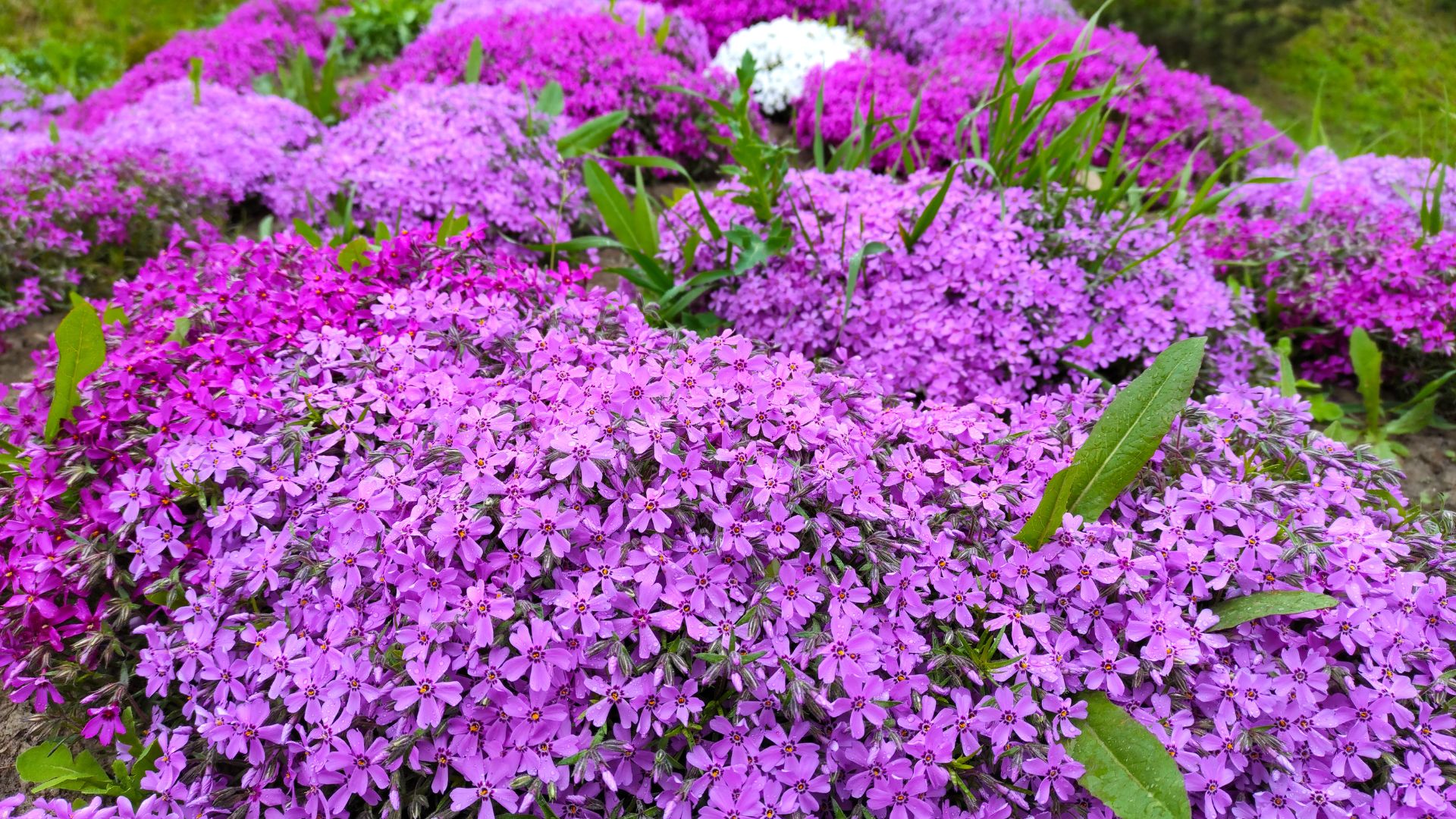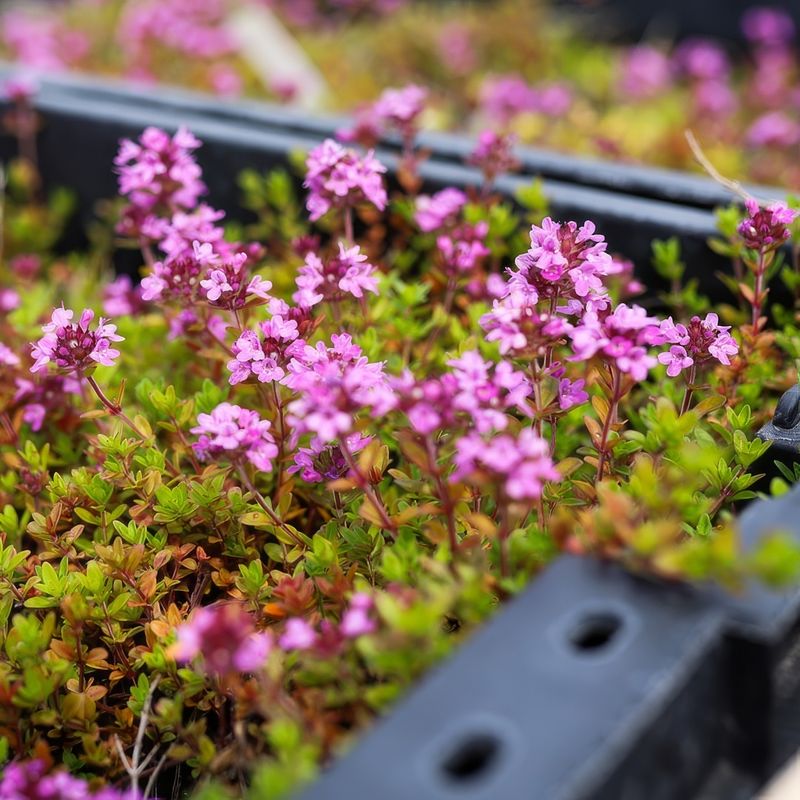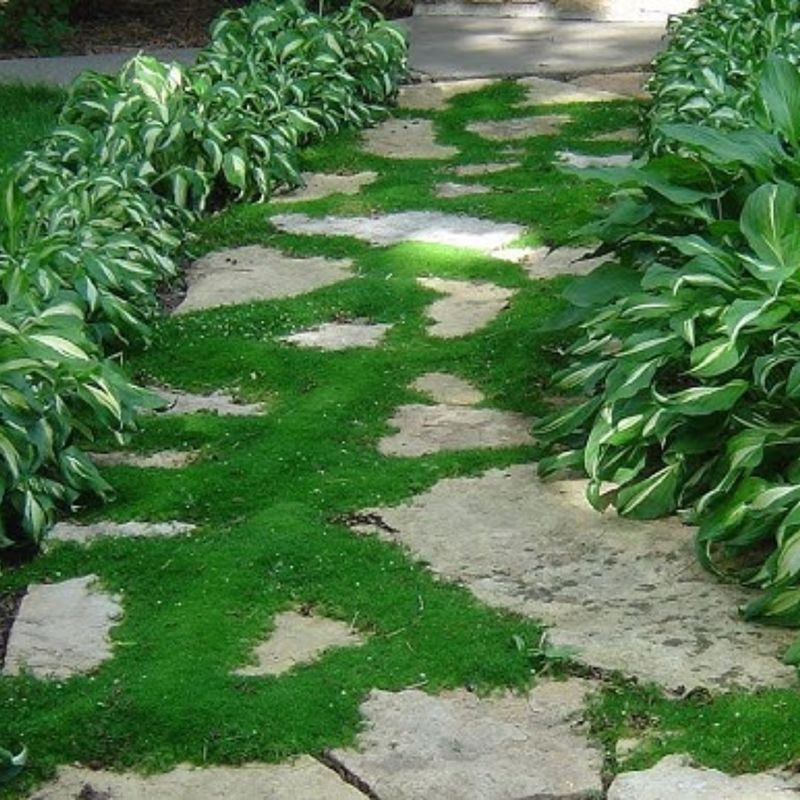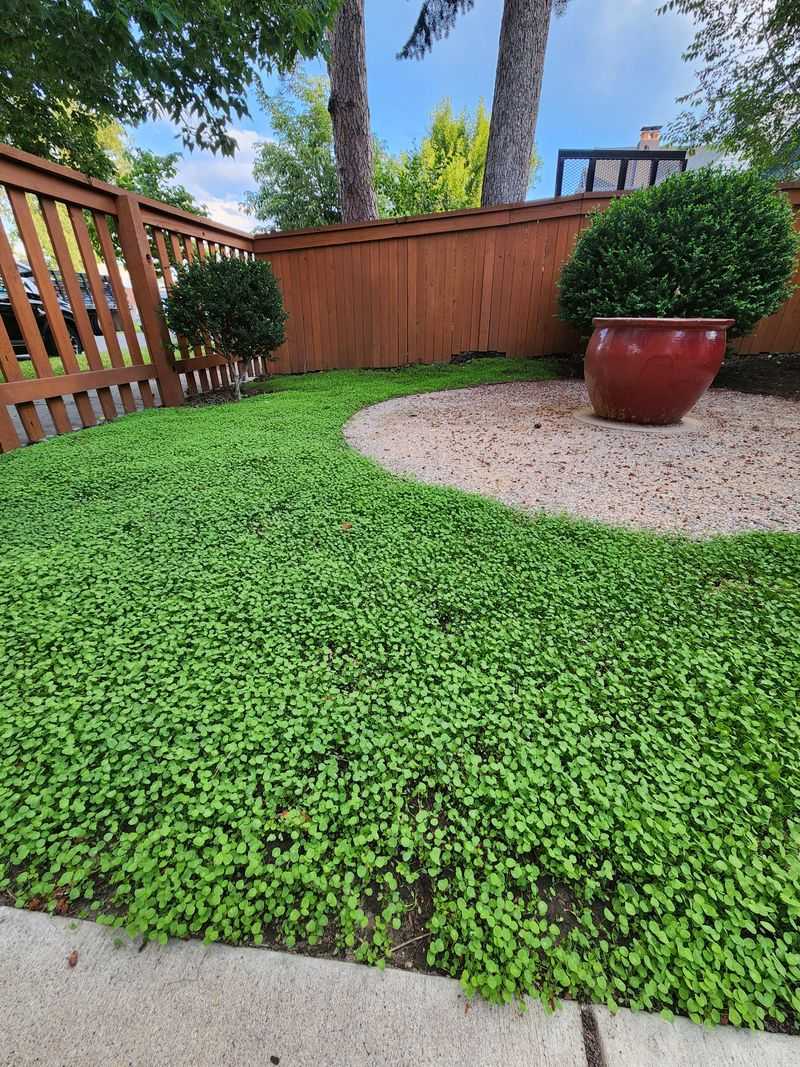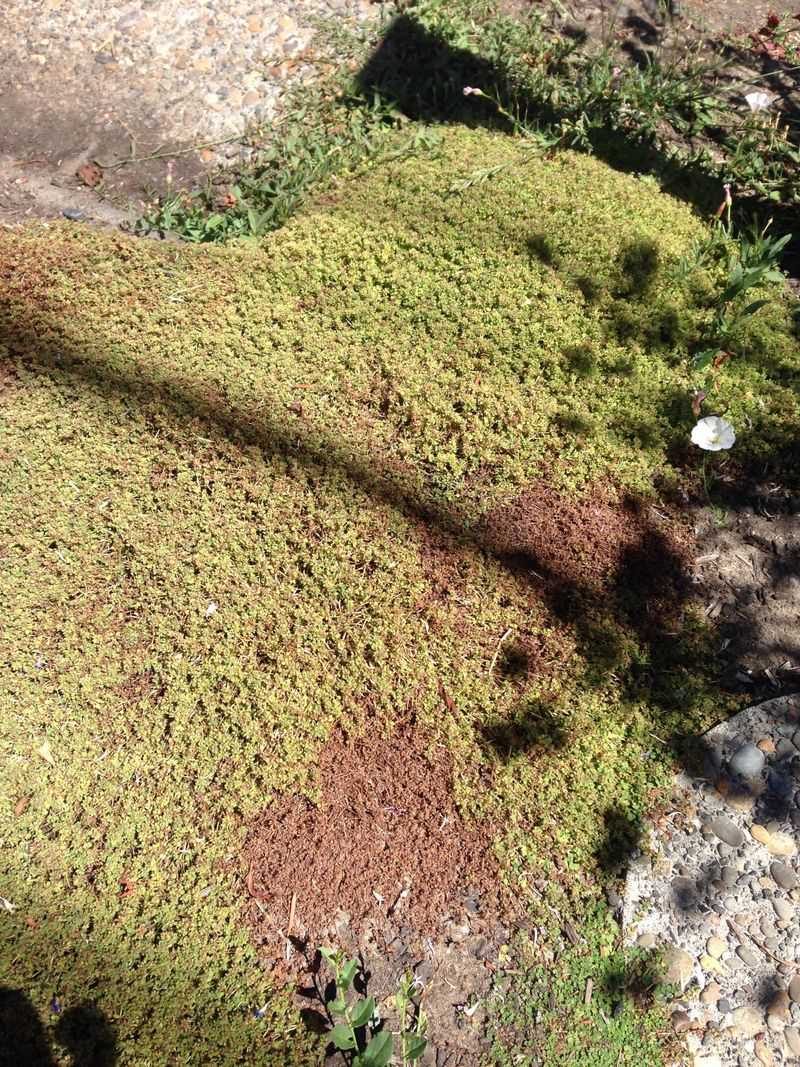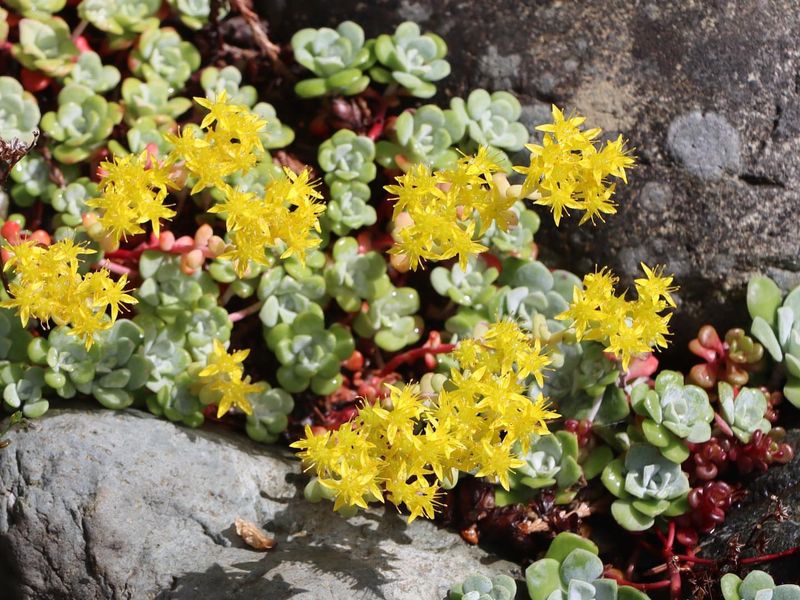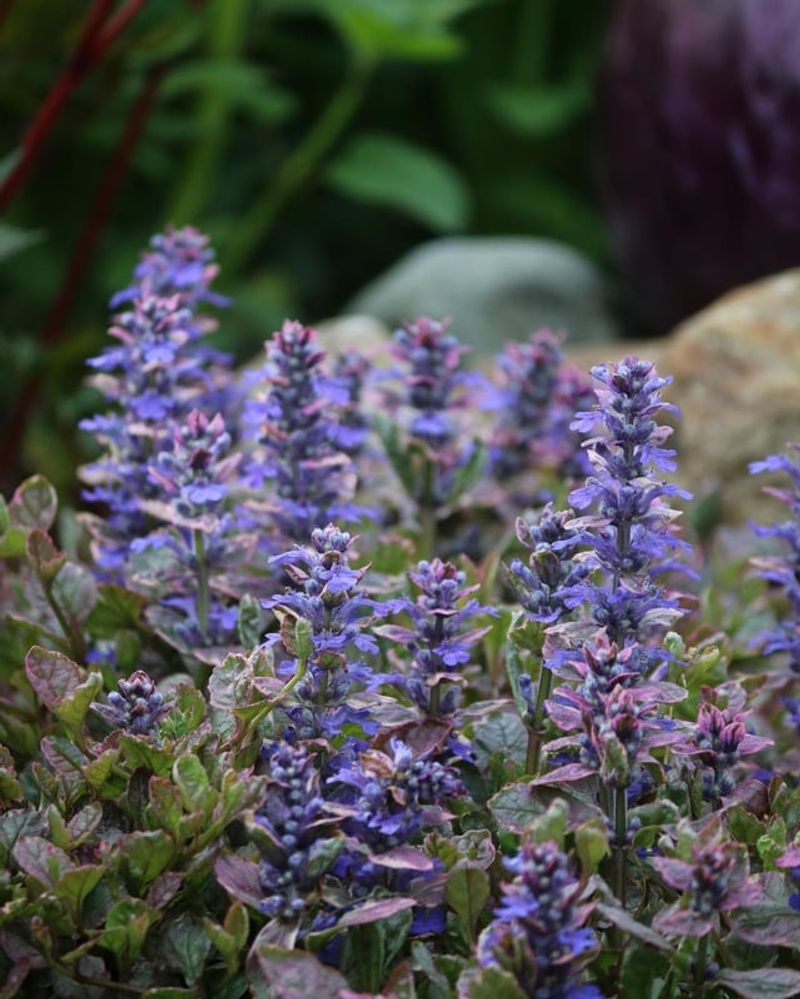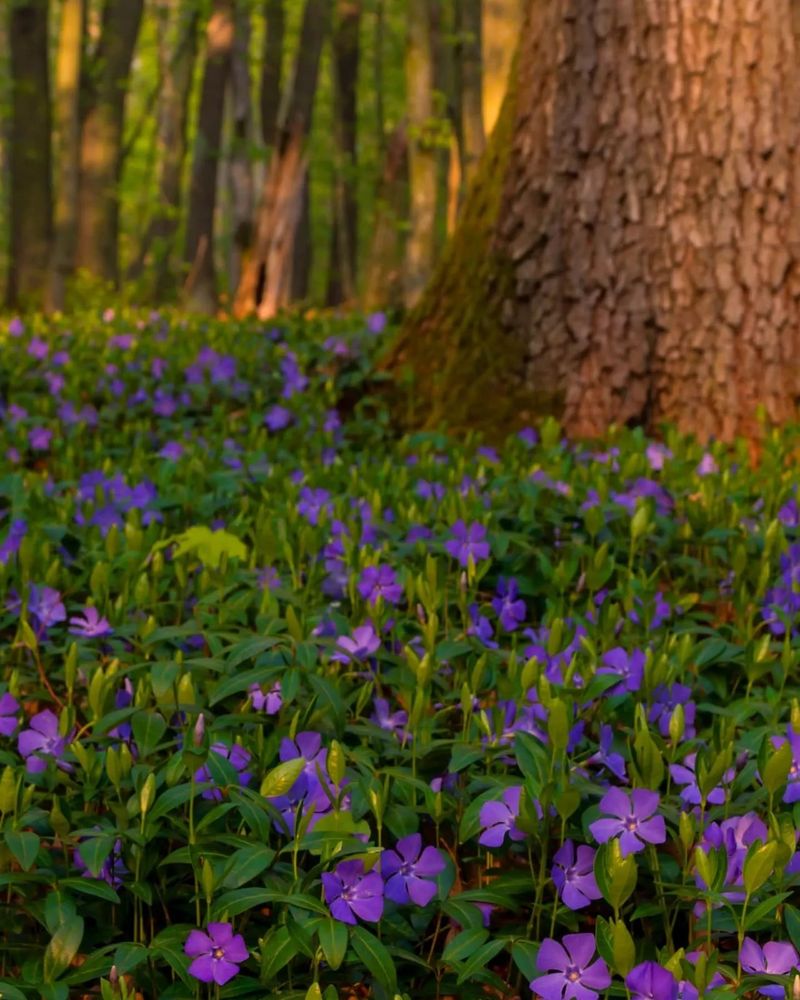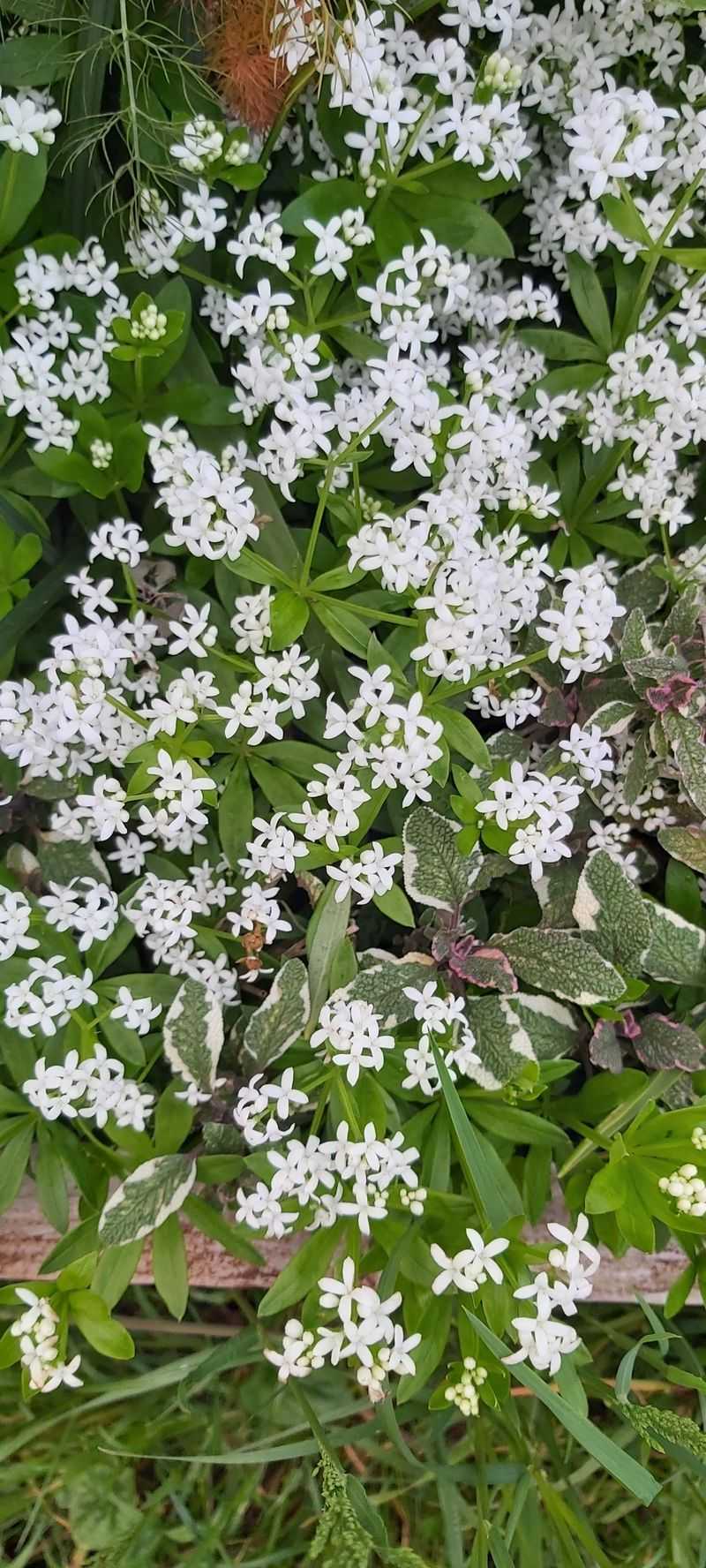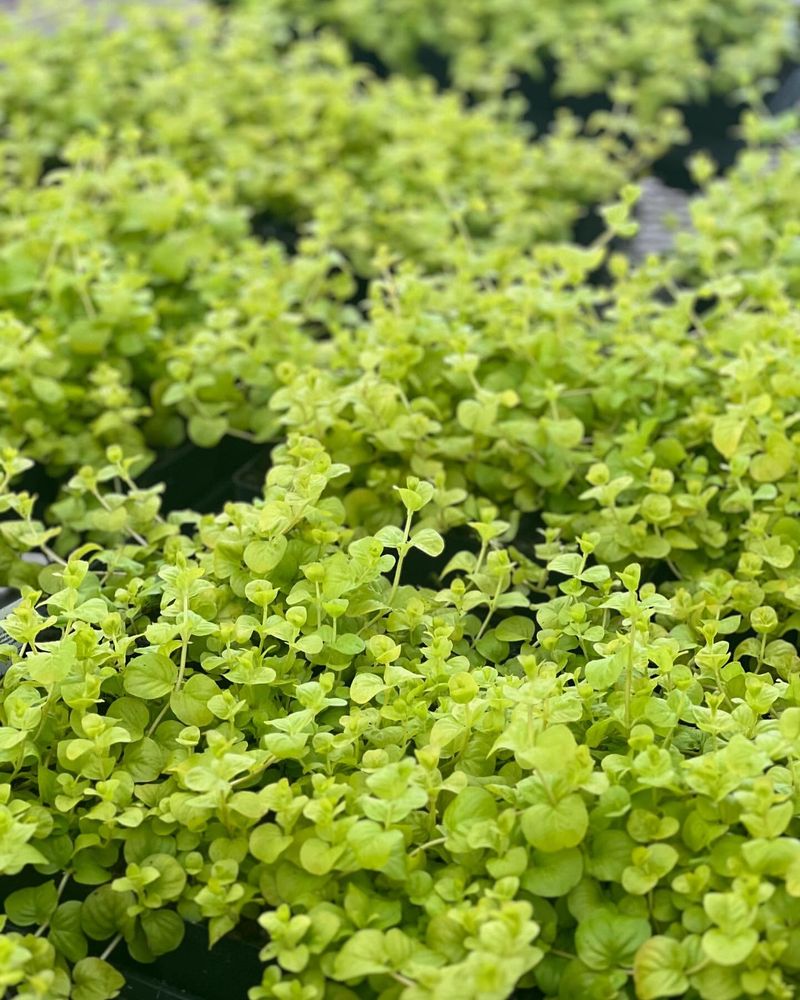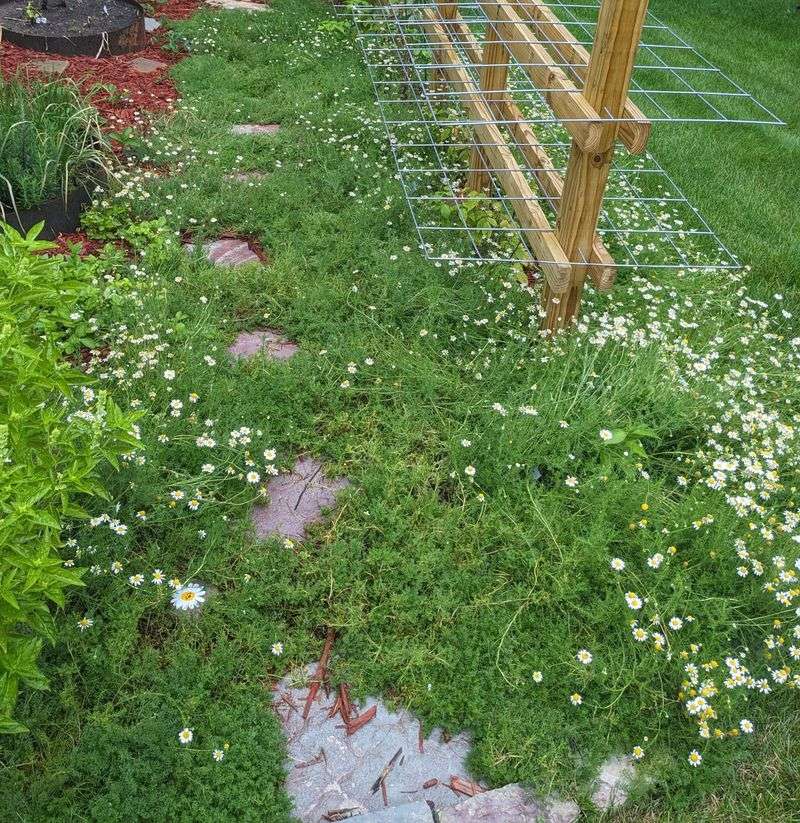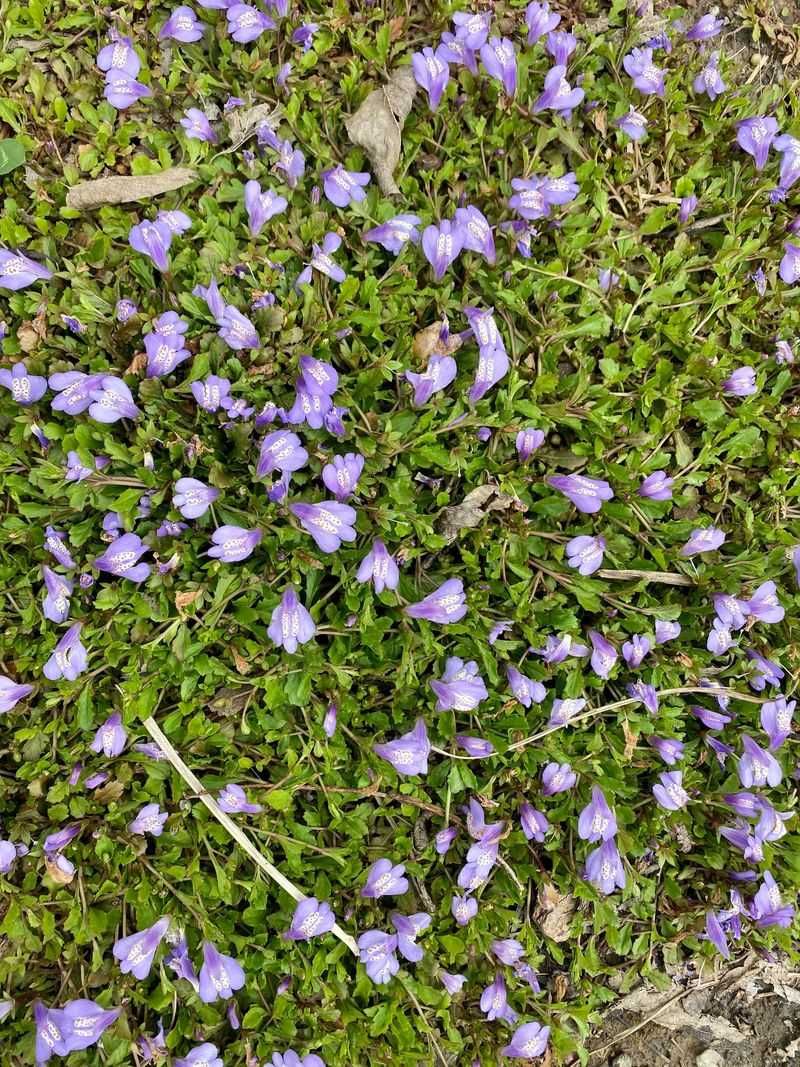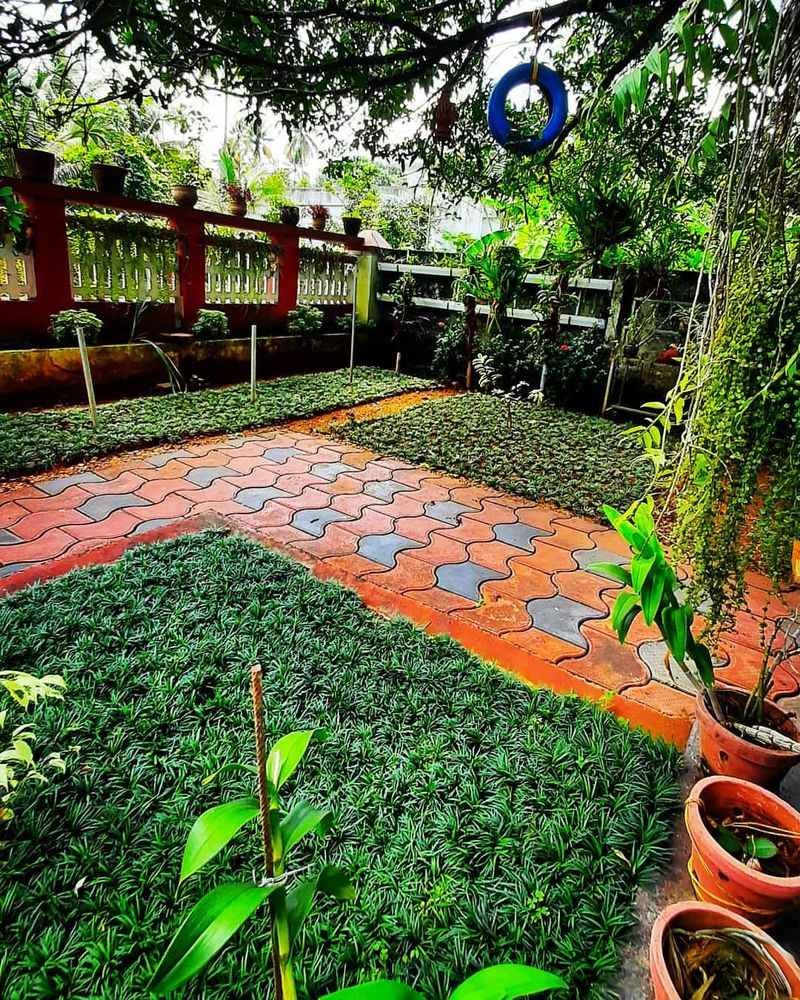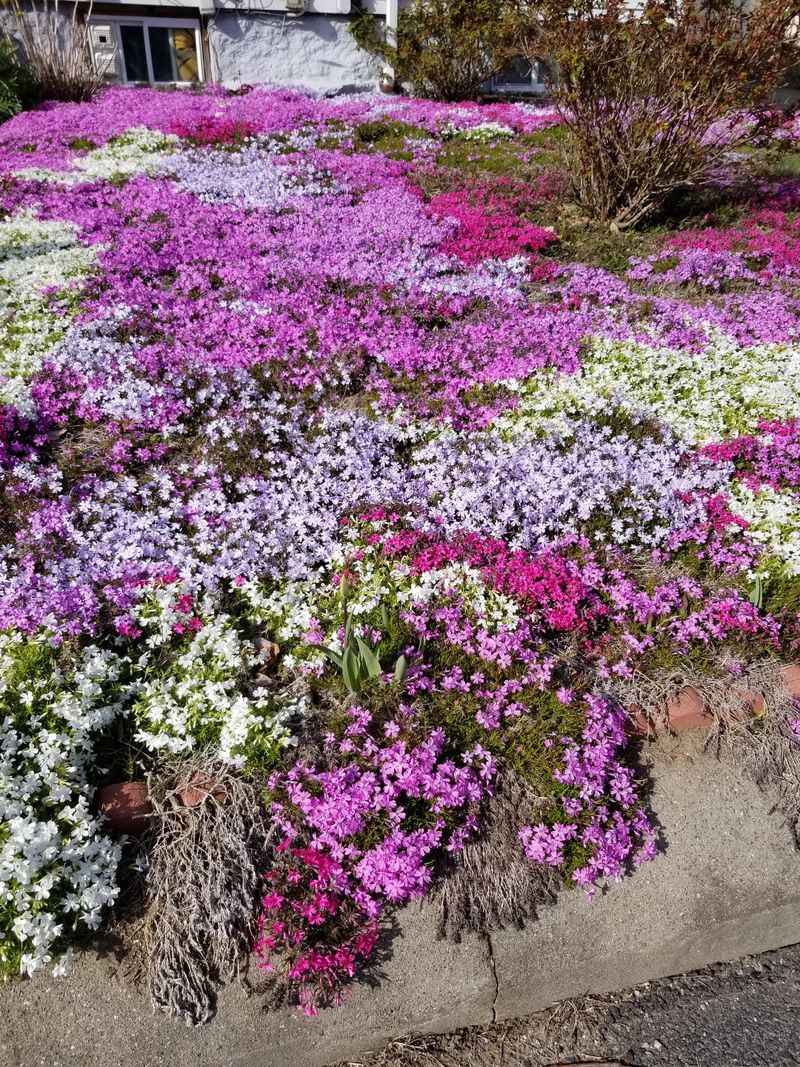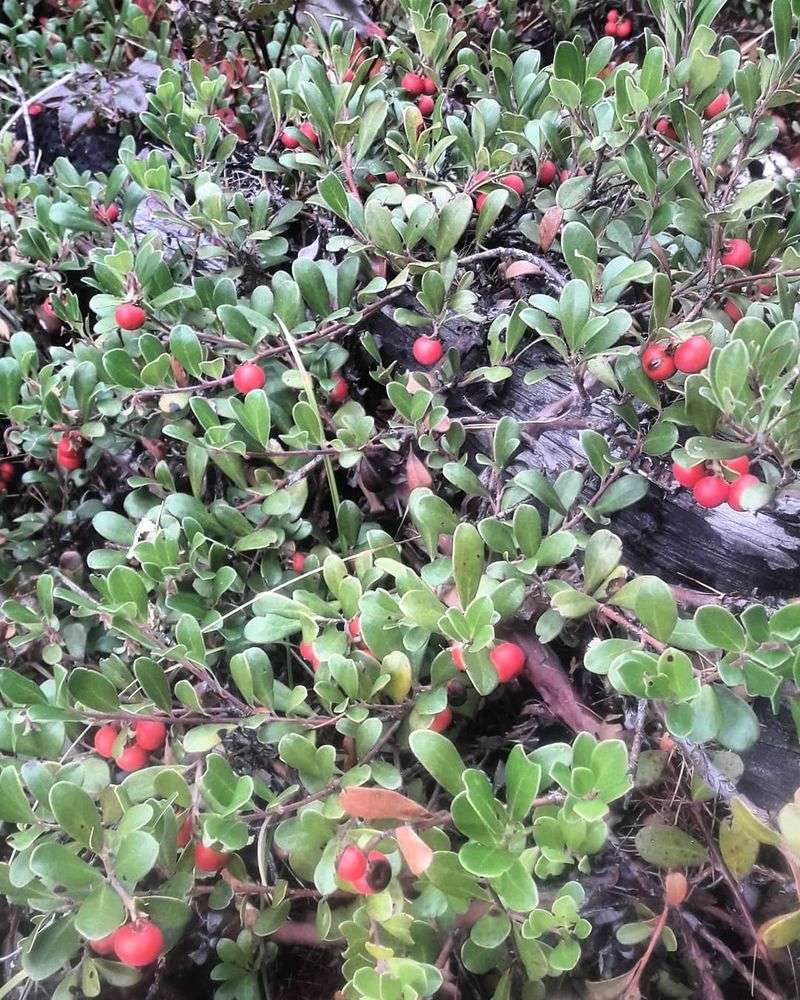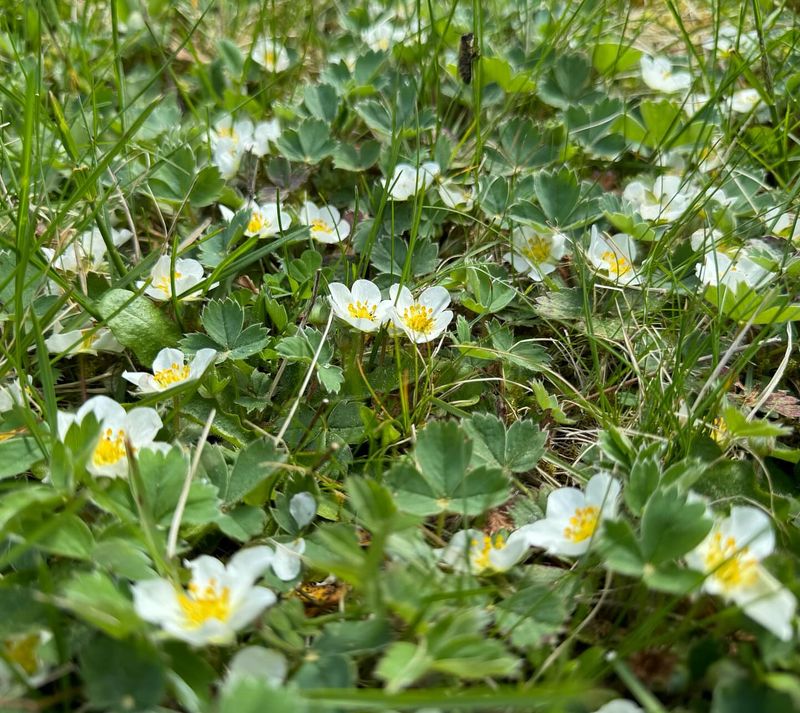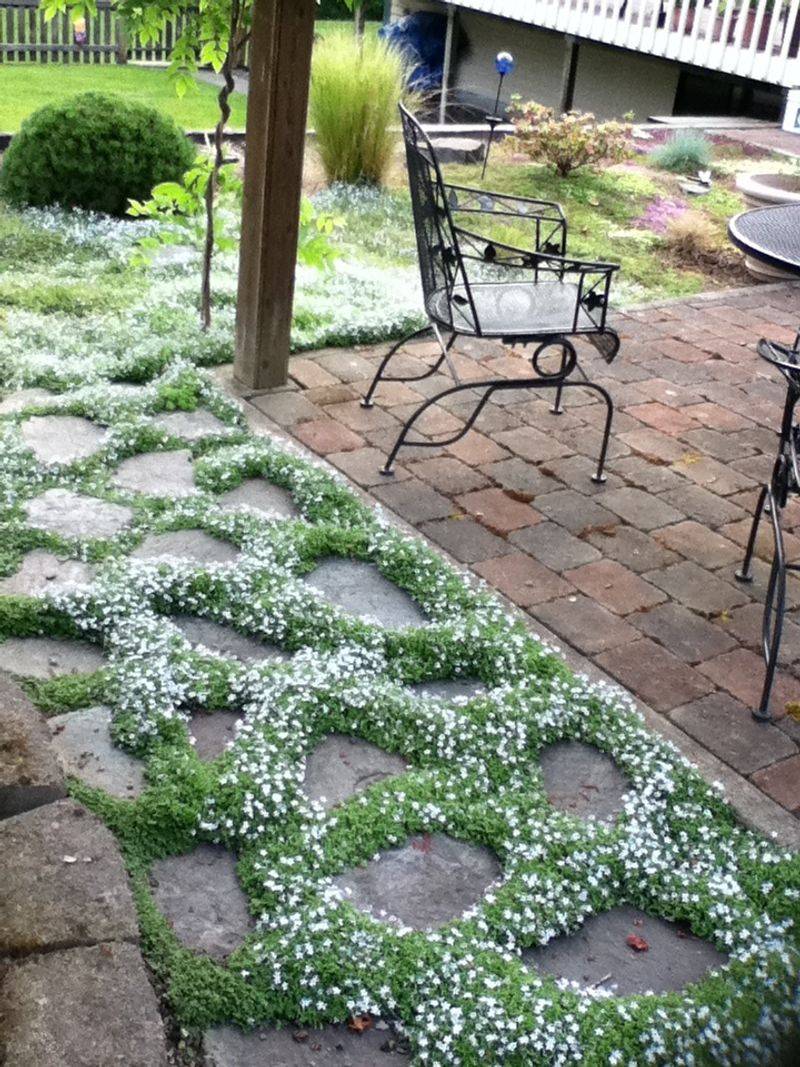After three summers of endless watering and mowing, my front lawn still looked patchy and defeated. Life in the Pacific Northwest means soggy winters and increasingly dry summers—a mix that turned my grass into a yearly disappointment.
So, I tried something different. In one stubborn corner where nothing ever grew, I planted a few ground covers. That small patch turned out to be the healthiest part of my yard, and nearly maintenance-free. Two years later, half my lawn had been replaced with 17 diverse ground cover varieties.
The result? Not just better curb appeal, but more free time and a yard that feels alive. No more weekend lawn chores—just colorful textures, seasonal flair, and buzzing life from beneficial insects that never showed up for plain old turf.
1. Creeping Thyme – The Fragrant Foot-Friendly Option
Walking on this plant releases a wonderful herbal scent that regular grass could never provide. It forms a dense mat only 2-3 inches tall that never needs mowing.
The tiny purple flowers that appear in summer attract bees and butterflies, adding movement to what was once just static grass. Hardy in most climates, it handled both the occasional foot traffic and my dog’s outdoor adventures without showing wear.
2. Moss – Nature’s Carpet For Shady Spots
Under the maple tree where grass always struggled, moss created a lush green carpet that thrives in shade. No more trying to grow sun-loving grass in a spot that clearly wanted something else.
The velvety texture feels amazing underfoot and stays green year-round in my climate. After a light rain, the moss glows with an almost otherworldly green that makes that corner of my yard feel like an enchanted forest.
3. Clover – The Drought-Resistant Nitrogen Fixer
White clover turned my driest patch of lawn into a drought-resistant haven that stays green when everything else browns out. The small white flowers look like tiny stars against the green backdrop.
Unlike my resource-hungry grass, clover actually improves soil by fixing nitrogen. My neighbors initially questioned my “weedy” lawn section until they noticed how it remained green without watering during our August dry spell.
4. Corsican Mint – A Refreshing Aromatic Surprise
The unexpected joy of Corsican mint comes from both its appearance and scent. Every time I brush against it, the strong minty fragrance reminds me why I gave up that patch of grass.
Its tiny round leaves create a delicate carpet that’s surprisingly tough despite its dainty appearance. The bright emerald color stands out from traditional lawn grass, creating visual interest where there was once just a flat expanse of fading green.
5. Sedum – The Survivor That Thrives On Neglect
My rocky slope that always washed out during heavy rains finally met its match with low-growing sedum varieties. These succulent ground covers actually prefer poor soil and minimal water.
The fleshy leaves come in fascinating shapes and colors that change with the seasons. Fall brings starry flowers that attract pollinators, turning what was once my lawn’s problem area into the garden’s highlight. Even after forgetting about it for months, sedum keeps looking good.
6. Ajuga (Bugleweed) – The Shade-Loving Color Champion
The glossy bronze-purple foliage of ajuga transformed the dark side of my house where grass always looked thin and sad. Its spreading habit quickly filled in bare spots without becoming invasive in my yard.
Each spring, blue flower spikes rise above the colorful leaves, creating weeks of interest. The contrast between the dark foliage and bright flowers gives this area more visual appeal than grass ever could, even in deep shade.
7. Vinca Minor – The Evergreen Problem-Solver
Under the large oak where nothing seemed to grow, vinca minor created a sea of glossy green that stays attractive all year. The blue-purple flowers in spring add a surprising pop of color to a formerly barren area.
Its vigorous growth habit meant I only needed a few starter plants to cover a substantial area within two seasons. Unlike my constant battle with reseeding grass in this spot, vinca simply took over and handled the challenging conditions without complaint.
8. Sweet Woodruff – The Woodland Gem
Sweet woodruff’s whorls of bright green leaves brightened the darkest corner of my yard where grass always looked sickly. Its star-shaped white flowers in spring create a constellation effect against the green backdrop.
The slight vanilla scent when the leaves are crushed adds an unexpected sensory element to my garden. After three years, it’s formed a perfect circle under the birch trees, defining the space more elegantly than the patchy grass ever did.
9. Creeping Jenny – The Golden Cascader
Along my garden path, creeping Jenny’s chartreuse leaves create a bright ribbon that catches the eye even from across the yard. The coin-shaped leaves form a dense mat that chokes out weeds more effectively than my old struggling grass edge ever did.
It cascades beautifully over the stone border, softening hard edges in a way grass never could. During our rainy season, it spreads quickly, but stays well-behaved enough that I only need to trim it back once a year.
10. Roman Chamomile – The Aromatic Lawn Alternative
Roman chamomile created a fragrant, meadow-like carpet in the sunniest part of my former lawn. The apple-scented foliage releases its calming fragrance whenever someone walks across it.
Unlike my previous grass that turned brown in summer heat, chamomile stays green with minimal water. The daisy-like flowers that appear throughout the growing season add whimsical charm and attract small pollinators that never showed interest in my conventional lawn.
11. Mazus – The Flower Carpet For Moist Areas
The slightly damp area near my downspout transformed from muddy grass to a lush carpet of mazus that actually appreciates the extra moisture. Its low-growing habit means I never need to mow, while the purple-blue flowers create a seasonal color show.
Despite its delicate appearance, mazus handles light foot traffic without damage. The contrast between the small green leaves and vibrant flowers makes this former problem area now the first place visitors comment on.
12. Dwarf Mondo Grass – The No-Mow Grass Lookalike
For those who want the look of a lawn without the maintenance, dwarf mondo grass provided the perfect solution along my front walkway. Its tidy clumps of grass-like foliage maintain a consistent 4-inch height without ever needing mowing.
The deep green color stays vibrant year-round in my climate, outlasting actual grass by months. Planted in a grid pattern, it filled in completely within two seasons, creating a uniform look that satisfies my need for order while eliminating weekend mowing.
13. Creeping Phlox – The Spring Color Explosion
The sloped front section that was always a pain to mow now bursts with vibrant pink-purple flowers each spring thanks to creeping phlox. Its needle-like evergreen foliage forms a dense mat that prevents erosion far better than my struggling grass did.
Even after the spectacular spring bloom, the sturdy green foliage provides year-round structure. The cascading growth habit works perfectly on the incline, turning what was once an awkward mowing challenge into the showpiece of my spring garden.
14. Lamb’s Ear – The Tactile Sensation
The silver-gray fuzzy leaves of lamb’s ear created an irresistibly touchable border along my garden path where grass always looked scraggly. Its soft texture invites interaction in a way that grass never did.
Children visiting my garden are drawn to touch the velvety leaves, making it an unexpected conversation piece. The drought tolerance means this section stays attractive even during water restrictions, while the lavender flower spikes add vertical interest to what was once just flat turf.
15. Kinnikinnick – The Native Ground Cover Champion
This native bearberry transformed my dry, sandy corner into a wildlife haven that needs zero irrigation once established. The leathery evergreen leaves maintain interest year-round, while the small red berries attract birds.
Unlike my previous attempts with grass in this spot, kinnikinnick actually prefers poor soil conditions. The trailing stems create a natural-looking carpet that connects my yard visually to the surrounding landscape. Local wildlife appreciates this native addition far more than they ever noticed my struggling lawn.
16. Ornamental Strawberry – The Edible Ground Cover
The sunny border that never quite looked right with grass now serves double duty with ornamental strawberry. The pretty white flowers in spring give way to small, sweet berries that my kids love to hunt for.
Its vigorous runners quickly filled in gaps, creating a weed-suppressing mat of attractive trifoliate leaves. Unlike regular grass that offered nothing but a green backdrop, this ground cover provides visual interest, wildlife value, and occasional snacks. The glossy green leaves look neat and tidy with zero mowing.
17. Blue Star Creeper – The Delicate Lawn Impostor
From a distance, blue star creeper looks like a perfect lawn, but up close reveals tiny star-shaped blue flowers that conventional grass could never produce. Its tight, dense growth fills gaps between stepping stones where grass always looked patchy and required tedious trimming.
Despite its delicate appearance, it handles moderate foot traffic with ease. The subtle blue flowers that appear throughout the growing season create a magical effect, especially in evening light when they seem to glow against the green background.

